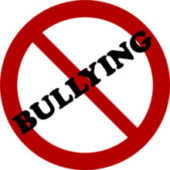Bullying is at epidemic proportions and affects children, parents, teachers and the community.
- One in seven students in grades K – 12 are either a bully or have been a bullying victim.
- An estimated 160,000 U.S. children miss school daily for fear of attack or intimidation by other kids.
- 83 percent of girls and 79 percent of boys report experiencing harassment.
- Six out of 10 teenagers say they witness bullying in school every day.
- Nearly nine out of 10 LGBTQ youth report being verbally bullied at school in the past year because of sexual orientation.
- 57 percent of boys and 43 percent of girls reported being bullied because of religious or cultural differences.
- Bullies often go on to perpetrate violence later in life: 40 percent of boys identified as bullies in grades 6-9 had three or more arrests by age 30.
- One out of every 10 students who drop out of school does so because of repeated bullying.
- 75 percent of shooting incidents at schools have been linked to bullying and harassment.
- 64 percent of children who were bullied did not report it.
- Nearly 70 percent of students think schools respond poorly to bullying.
- When bystanders intervene, bullying stops within 10 seconds 57 percent of the time.
According to the National Education Association, the adverse effects of bullying can lead to symptoms of physical illness and a diminished ability to learn. This translates into increased absenteeism and impaired performance, as indicated by decreased test scores.
Bullying includes actions such as making threats, spreading rumors, attacking someone physically or verbally and excluding someone from a group. Bullying can happen anywhere—cities, suburbs or rural areas. Most times, children who are bullied have one or more of these risk factors:
- Are perceived as different from peers, such as being overweight or underweight, wearing glasses or different clothing, being new to school or unable to afford what kids consider “cool”
- Are perceived as weak or unable to defend themselves
- Are depressed, anxious or have low self esteem
- Are less popular than others and have few friends
- Do not get along well with others, seen as annoying or provoking, or antagonize others for attention
However, even if a child has these risk factors, it doesn’t mean that they will be bullied.
Sources:
https://americanspcc.org/our-voice/bullying/statistics-and-information/
http://antibullyinginstitute.org/facts#.W7ldPmhKhEZ


